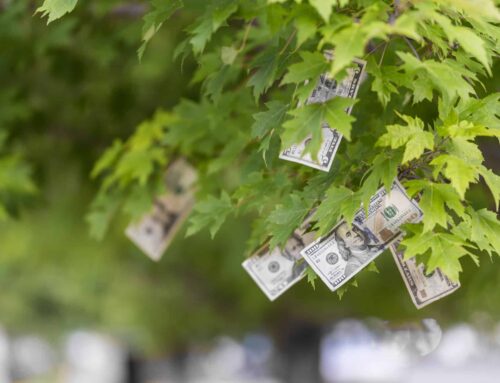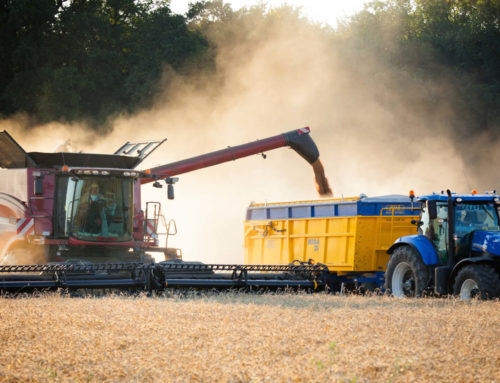The all-important September 30 deadline is fast approaching. Absent agreement on a continuing resolution, at the stroke of midnight, the government shutdown begins. The end of Fiscal Year 2023 is actually a deadline for more than just keeping the lights on. Legislation authorizing the National Flood Insurance Program, Federal Aviation Administration (domestic air traffic), and the 2018 farm bill are amongst the big ticket bills that “expire” at the end of the fiscal year. Congress has its hands full to avoid a government shutdown. But it’ll take more than an agreement to avoid a shutdown and for Congress to get our fiscal house in order.
One great place to hit two birds with one stone is reining in wasteful farm subsidy spending.
The five-year farm bill, a sprawling $1.4 trillion piece of legislation, covers everything from nutrition assistance to farm subsidies, with research, trade, bioenergy, and other priorities scattered in between. The programs authorized by the 2018 farm bill are on track to come in a half trillion dollars more than projected when the bill was signed into law. Considering the track record of farm bill cost projections, under-estimates appear to be more of a feature than a bug. And with high annual deficits and a record national debt, this is unsustainable.
Huge taxpayer savings can be found in the next farm bill if lawmakers maintain fidelity to the three Fs of farm policy – formulating a federal safety net that is focused, fiscally responsible, and fosters resilience, instead of dependence on Uncle Sam.
Let’s start with the first F – focused.
While the farm lobby talks a lot of talk about helping beginning farmers, feeding the world, and the need for a stable, predictable farm safety net, the current reality is far from it. Once you get past the lobbyists, the farmers themselves say farm subsidies actually hurt beginning farmers by giving checks to large landowners, hiking the price of land, and spurring more farm consolidation. More and more, U.S. crop production lands in fuel tanks in the form of biofuels – feeding cars, not kids. And finally, with recent ad hoc spending on disaster aid, COVID-19, and the off-budget Commodity Credit Corporation, farm spending has been anything but predictable and stable.
Two weeks ago, the U.S. Department of Agriculture’s (USDA) Economic Research Service (ERS) released new data solidifying this reality. Government payments to agriculture this year are expected to total $12.6 billion, primarily comprised of unpredictable “emergency” disaster spending. This is down from the $46 billion record set during the COVID-19 pandemic in 2020 but still unnecessarily high, with the agricultural sector coming off a record year of net farm income in 2022. The farm lobby perpetually cries wolf, saying the industry isn’t faring well, but the numbers beg to differ.
Moreover, USDA’s figures don’t include generous crop insurance premium subsidies available to a wide variety of crops. That’s another $11-$12 billion in taxpayer subsidies per year. Some ad hoc disaster checks are sent to farmers already receiving subsidized crop insurance. Double-dipping subsidies does not address a need, but instead certain politicians’ wants. Most of these subsidies flow to large landowners who do not need federal taxpayer subsidies, with support targeting beginning farmers largely nowhere to be seen.
Second, the federal farm safety net should be fiscally responsible. That means we only pay for what we need. Recent Government Accountability Office (GAO) and Congressional Budget Office (CBO) reports (the nonpartisan investigative and budget-scoring arms of Congress, respectively) identified numerous farm bill reforms that can yield tens of billions in taxpayer savings, with minimal – or even beneficial – impacts. Reining in unlimited crop insurance subsidies by eliminating eligibility for millionaires, billionaires, and non-farmers, for instance, are just a few common sense reforms that should be adopted in the next farm bill. Eliminating – instead of expanding – market-distorting, government-enforced minimum price supports (aka, “reference prices”) for a handful of crops should also be a top priority.
As a country, we simply can’t afford to allow wasteful, unnecessary farm subsidy programs to continue on auto-pilot. Over the next ten years, government-enforced crop prices and another farm subsidy program – Agriculture Risk Coverage – are expected to cost taxpayers over $50 billion. Add in more than $100 billion for the federal crop insurance program, off-budget spending through the CCC slush fund, and more, and you have a recipe for (fiscal) disaster.
While mandatory farm spending increases on auto-pilot, Congress is grappling with lower discretionary spending levels to get appropriations bills (or a continuing resolution) over the finish line to avoid a government shutdown. Significantly increasing subsidies for individuals who do not need it on the one hand, while slightly reducing spending on the other, fails to address pressing fiscal challenges facing our nation adequately.
The good news is numerous opportunities exist to foster resilience instead of certain agricultural producers’ dependence on taxpayer subsidies. One way to foster resilience is to incorporate risk-reducing conservation practices into federal crop insurance premiums, similar to a good driver’s discount with auto insurance. There’s plenty of room for common sense ideas like this in the next farm bill – instead of more bloated subsidies for special interests.
The clock is ticking. The time could not be better to rein in wasteful farm spending – and avoid a government shutdown.










